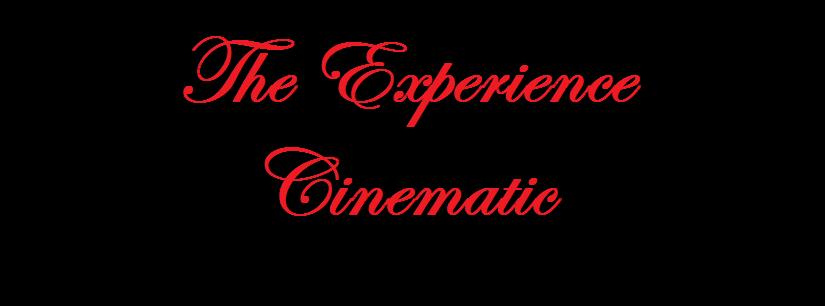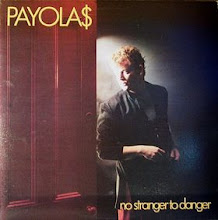 As you will notice from the heading of this review, the film under discussion today has two titles. The proper title for the film and the one which the film was originally released under in the UK, is The Full Treatment, while the North American release title (and the one included on the DVD edition of the film here in region one) is Stop Me Before I Kill! While both titles reflect the content of the film, neither title is totally successful in reflecting the ironies and complexities of this psychologically and sexually focused thriller. Director Val Guest has, as the second title suggests, crafted a pulpy film that sets out to titillate and shock, but the film is more than just a cheap thriller, as it explores male fears of emasculation and the complexities of psychoanalysis through playing with audience identification, voyeurism, and the audience's desire for control over the narrative's meaning.
As you will notice from the heading of this review, the film under discussion today has two titles. The proper title for the film and the one which the film was originally released under in the UK, is The Full Treatment, while the North American release title (and the one included on the DVD edition of the film here in region one) is Stop Me Before I Kill! While both titles reflect the content of the film, neither title is totally successful in reflecting the ironies and complexities of this psychologically and sexually focused thriller. Director Val Guest has, as the second title suggests, crafted a pulpy film that sets out to titillate and shock, but the film is more than just a cheap thriller, as it explores male fears of emasculation and the complexities of psychoanalysis through playing with audience identification, voyeurism, and the audience's desire for control over the narrative's meaning.The Full Treatment is the story of a famous English race car driver named Alan Colby (Ronald Lewis) and his wife Denise (Diane Cilento), who on their wedding day are involved in an accident. Nearly a year later, the couple are reattempting their honeymoon in Cannes, but Colby is afraid that sexual desires seem to be manifesting in a desire to kill his wife. During their trip, they encounter Dr. David Prade (Claude Dauphin), a French psychiatrist who operates out of London, who takes a interest in the couple, an interest which unsettles Alan. However, with his violent urges growing, and a push from his wife, Alan agrees to undergo treatment with Dr. Prade, a treatment which turns out to be more than Alan and Denise ever expected as Dr. Prade‘s own desires come into play.
 The plot of the film is deceptively simple, with the surface narrative suggesting a tale of a man who loves his wife but is afraid to harm her do to his own personal guilt, who manages to salvage himself by submitting to analysis and finally proving his worth as a healthy male. This surface narrative however is unable to truly contain the underlying contradictions and ambiguities, which transform the film into an exploration of male misogyny, driven by fears of emasculation by women and the comforts of the homosocial environment. These themes are further complicated by the films explicit guidance of the audience to perform a psychological analysis on the film, whilst at the same time pointing out the failings of such an approach.
The plot of the film is deceptively simple, with the surface narrative suggesting a tale of a man who loves his wife but is afraid to harm her do to his own personal guilt, who manages to salvage himself by submitting to analysis and finally proving his worth as a healthy male. This surface narrative however is unable to truly contain the underlying contradictions and ambiguities, which transform the film into an exploration of male misogyny, driven by fears of emasculation by women and the comforts of the homosocial environment. These themes are further complicated by the films explicit guidance of the audience to perform a psychological analysis on the film, whilst at the same time pointing out the failings of such an approach.The opening scene of the film is overwhelming in the information it reveals to the audience. Filmed as a long tracking shot, the opening scene reveals several important details: first, that the accident happens on the wedding day of Alan and Denise, as revealed by a “just married” sign on their badly damaged car; second, Denise, while injured, is conscious and able to move, only collapsing after checking her husband; lastly, we discover that Alan is a famous race car drive from his picture being on the side of a petrol tanker which stops at the crash. This opening scene reveals much about the complicated existence of its protagonists, as the spectacle of the accident also is imbued with the spectacle of celebrity, and the couple’s marriage becomes correlated with the accident.
This correlation is one of the most vital points of the film with regards to subtext, as Alan’s inability to drive and function within a sexual relationship begins with the accident. Alan’s sense of masculine identity is tied to his abilities of a race car driver, a profession noted for dangerous driving while remaining “in control.” This profession brings Alan fame, and as the film points out, large numbers of women with whom to engage sexually. The event of marriage, an event in which the individual becomes part of a larger unit, requires a degree of relinquishing a sense of control over ones life to that of another, as well as sexual freedom. Thus, the wedding/crash becomes a double site, and “sight” for the audience, of Alan’s emasculation both sexually and professionally, the latter seemingly being the result of the former. Furthermore, since Denise is the only one with memory of the accident, she holds a level of control over Alan who lacks this knowledge.
 Were the film to stop here with regards to exploring/explaining Alan’s drive to violence, the film would simply be reflecting a sense of gynophobia which emerges in acts of misogynistic behaviour on the part of the filmmakers as well as the characters. However, I am not sure that film is this this conservative and regressive. Given that the central dramatic thrust is focused upon Alan and Prade, in which Alan undergoes a further emasculation by the lecherous drives of Prade, Denise is sidelined, and serves mostly as a figure of victimization by both Prade and Alan, Denise is less a character and more of a figure onto which Alan and Prade project their desires and fears. Mind you, this victim status and Denise’ willingness to be subjected to abuse and manipulation by both reveals a sexist attitude on the part of the filmmakers which leaves her a weak character, but it does manage to avoid outright misogyny by focusing its attention squarely upon two heavily flawed men.
Were the film to stop here with regards to exploring/explaining Alan’s drive to violence, the film would simply be reflecting a sense of gynophobia which emerges in acts of misogynistic behaviour on the part of the filmmakers as well as the characters. However, I am not sure that film is this this conservative and regressive. Given that the central dramatic thrust is focused upon Alan and Prade, in which Alan undergoes a further emasculation by the lecherous drives of Prade, Denise is sidelined, and serves mostly as a figure of victimization by both Prade and Alan, Denise is less a character and more of a figure onto which Alan and Prade project their desires and fears. Mind you, this victim status and Denise’ willingness to be subjected to abuse and manipulation by both reveals a sexist attitude on the part of the filmmakers which leaves her a weak character, but it does manage to avoid outright misogyny by focusing its attention squarely upon two heavily flawed men.Then again, perhaps I just reworking the film to my own ends, creating a narrative subtext that fits my views and attitudes in order to give me a sense of mastery over the text. At least, the film wants the viewer to reflect on this possibility with its most subversive tactic: the inclusion of psychoanalysis in the narrative proper in the figure of Dr. Prad. As noted, Alan and Denise are not merely any couple, but celebrities who very existence becomes something of a spectacle for the public at large. In this sense, the Colby couple become evocative of the spectacle of cinema itself, and through Prade, the film challenges the audience’s voyeuristic drive and meaning generating agendas. If there is any doubt about this, consider that Prade first encounters the Colby couple in Cannes, the site of the world famous film festival that has taken place since 1946.
Prade’s voyeuristic desires to know and understand Alan’s psychology and ultimately substitute himself in place of Alan mirrors the audiences own voyeurism and the identification process with the film‘s characters. Prade’s psychoanalysis of Alan mirrors the audience’s own desire for understanding of the character and his behaviour, a point made by the repetition of Prade looking upon the couple at a distance. However, as Prade’s own desires become increasingly obvious Prade’s analysis and its results come into question: to what degree is the analysis “true,” and to what degree is it tainted by Prade’s obsession? Prade’s desire to gain “possession” and control over Denise begins to mirror our own desire to control the film’s meaning, disrupting the process of analysis and forcing a reflection upon the degree to which we bend a given text to fit our own needs. It is complex meta material, far beyond what the lurid title of Stop Me Before I Kill! would suggest.
The film’s pleasure are not entirely intellectual however. Director Guest has crafted a tense film filled with visual flair, which only manages to stubble in its resolution, which requires the smartest character in the film to make a foolish decision and a moment of chance in which a character witnesses something they more than likely would not. Moreover, Guest manages to pull serviceable performances from Lewis and Cilento, while giving Dauphin room to steal the film from everyone around him in a performance which recalls (and predates) Anthony Hopkins’ take on the character of Hannibal Lecter.
 It should be noted that the version I watched of the film is 108 minutes in length and found on the Icons of Suspense Collection of Hammer Films. If the IMDB is too be believed, the original UK version of the film is a full 12 minutes longer than the American cut, though for the life of me I cannot figure out what material would be missing, as the film is tightly constructed without feeling incomplete. This means that the biggest complaint I have with the film is the American title, and it is not often that the title is the only thing to complain about. Highly recommended.
It should be noted that the version I watched of the film is 108 minutes in length and found on the Icons of Suspense Collection of Hammer Films. If the IMDB is too be believed, the original UK version of the film is a full 12 minutes longer than the American cut, though for the life of me I cannot figure out what material would be missing, as the film is tightly constructed without feeling incomplete. This means that the biggest complaint I have with the film is the American title, and it is not often that the title is the only thing to complain about. Highly recommended.

No comments:
Post a Comment
What Is Your Cinematic Experience? Post Here!